The Cirque Du Soleil's percussion setup in pictures
Totem's James Mack shows off his congas and bongos
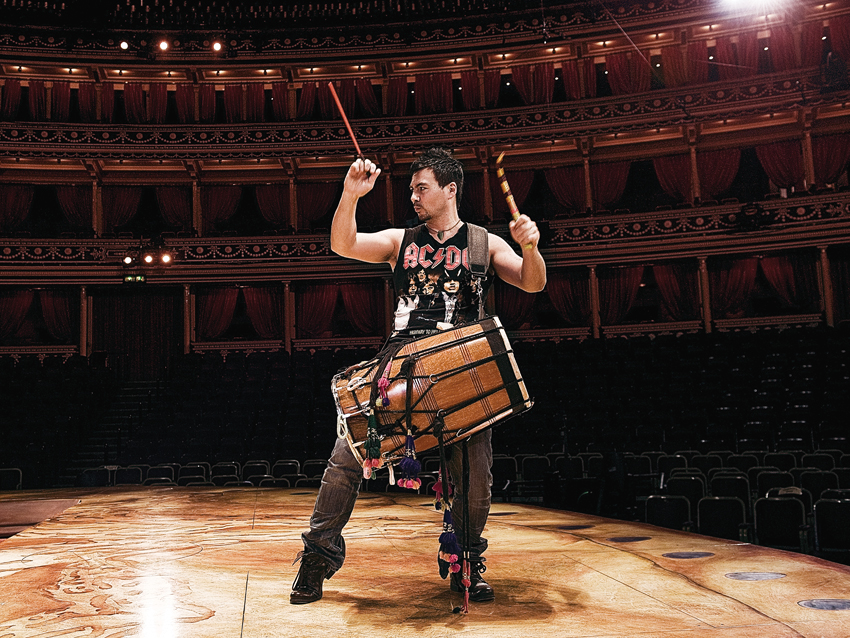
James Mack's Cirque Du Soleil Totem percussion setup in pictures
James Mack grew up with his sister and two brothers, and early on they were all put through martial arts training by their father, a well-respected and highly proficient practitioner of several martial styles. When they finished their rigorous training, they would retreat to their room to play music. As James told us, this was their solace.
The discipline James learned from this kind of training stood him in good stead for a life in music, cutting his teeth in the National Youth Jazz Orchestra (NYJO) alongside his good friend, the deeply missed Chris Dagley, on drums.
James has certainly kept himself busy since those early days and with all the tours, recordings and shows you would think he had experienced enough. With Cirque Du Soleil, however, James has become part of one of the most challenging shows on the planet.
Rhythm caught up with James to take a closer look at the impressive array of percussion gear he needs to soundtrack a Cirque Du Soleil production, and discuss what it takes to perform 10 gruelling shows a week. Here - among the shots of the aforementioned percussion setup you’ll see in this gallery - are snippets from that interview.
First up: James Mack’s live rig…
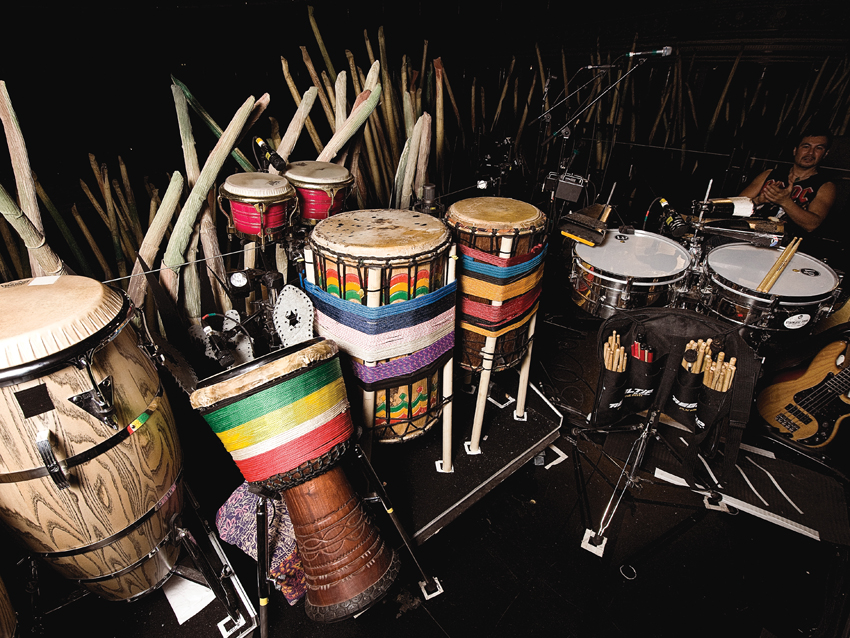
Percussion
Percussion
LP Giovanni Palladium congas: quinto, conga, tumba and Super-Tumba (tuned in fourths); LP Generation II Anniversary Edition bongos; LP Tito Puente Stainless Steel timbales; LP Cortez cajon; LP Wind Chimes, LP Bell Tree; djembes made in Guinea (with kessings and hand-skinned personally by James); Doumbek, tablas, Talking Drum, cuica, tambourim, shakers, darabouka, 13" dhol drum, ‘Glass Orchestra’
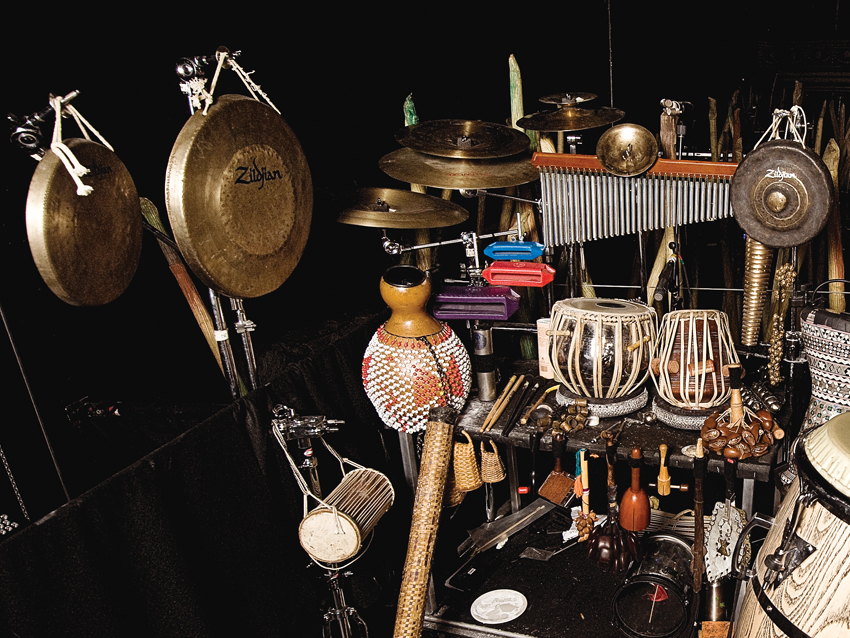
Cymbals, sticks and heads
Cymbals
Zildjian: 20" Oriental china; 20" Oriental crash; 14" K china; 12" K splash; 8" A splash; 8" Zil Bell; 16" gong; 12" gong; and 12" Temple Gong
Sticks
Regal Tip ‘Ride’ drumsticks
Heads
Remo synthetic Skyndeep conga and bongo heads, calfskin heads on djembes and doun douns
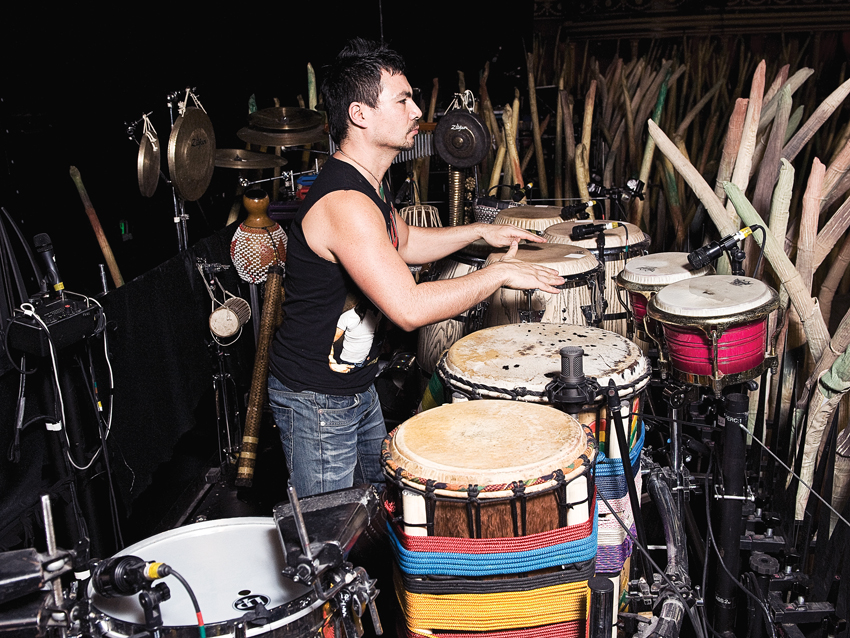
From drums to percussion…
You started on piano and migrated to drum kit, but at what stage did percussion first grab you?
"I used to play along all the time to The Specials and The Jam’s albums on drum kit, and then as I got older I got into Led Zeppelin, AC/DC and all the heavy metal bands. I started to have lessons at school with my drum teacher Brian Booth and he got me into the orchestral playing, timpani, jazz, and I also used to play with his big band.
"I did the Diploma Classical course at the Guildhall at the same time as the jazz course, playing with the big band there as well as jazz vibes, congas and lots of world percussion. I didn’t exactly turn my back on the orchestral stuff but I wasn’t as interested in it at that point!
"In 1993 I auditioned and got a tour with Des’ree playing hand percussion and had to leave the Guildhall at the beginning of the fourth year for that. It was kind of easy back then because everyone was using percussion with big bands, but around 2000 everyone started cutting down and putting stuff on Pro-Tools. They’d use four-piece bands and like 20 dancers instead of the other musicians!"
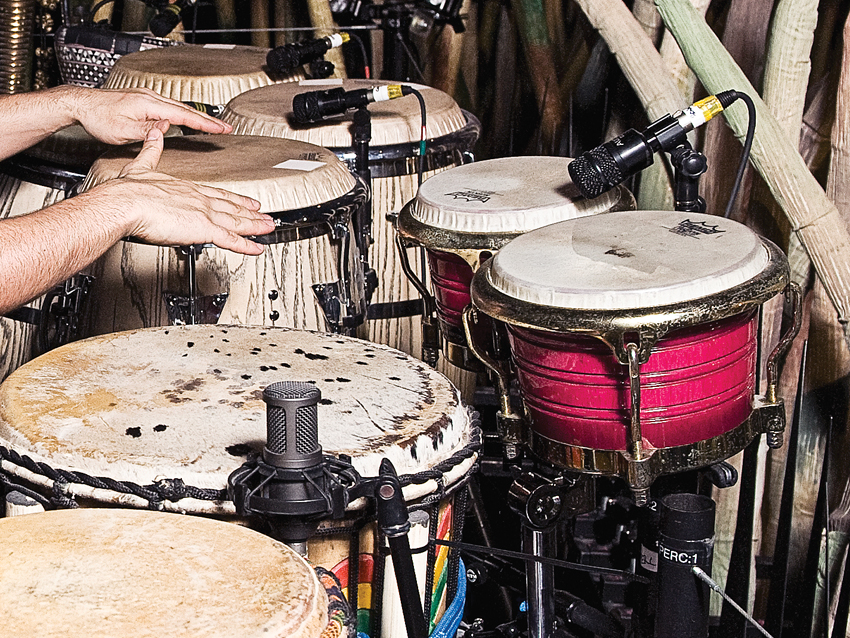
Being a multi-percussionist
What qualities were the Cirque looking for in a percussionist?
"With Cirque you kind of have to play everything and it’s not just congas. It’s hardcore shows with lots of solos so you’ve got to know djembe, darabouka, tablas - the whole array of percussion.
"When I did that first one I had to send video clips over the internet and they’d check out how you look and the way you perform. There are people auditioning from all over the world. Even in this band, nick the drummer is from LA, the keyboard player is from new Orleans and the bass player is from France."
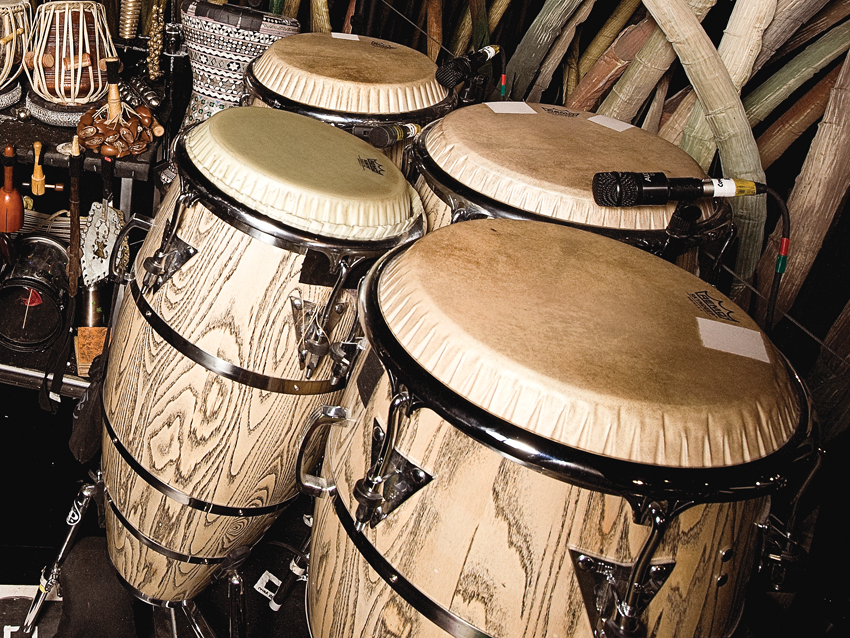
Congas, djembes and more
You have both classical and world percussion at your disposal but out of all these diverse instruments, do you have a particular favourite?
"I’ve studied congas for the past 20 years but over the last few years I’ve really gotten into the djembe and seeing how deep that instrument is. You see all these guys from Guinea and the Ivory Coast, which is where all the conga stuff comes from, and the djembe is so much higher!
"You see some of those guys from Guinea playing, and we all know the famous conga players but people don’t generally know many famous djembe players, except for, say, Mamady Keita from the Ivory Coast. But then there are other guys like Thomas Guei from the Ivory Coast; Fode Bangoura, Babara Bangoura and Mohamed Bangoura from Guinea and Harouna Dembele from Burkina Faso.
"You learn this Djembe technique and then you can apply that to congas as well. Even if you’re a conga player and you’ve been on the scene for years you must check these guys out because they will blow your mind!"
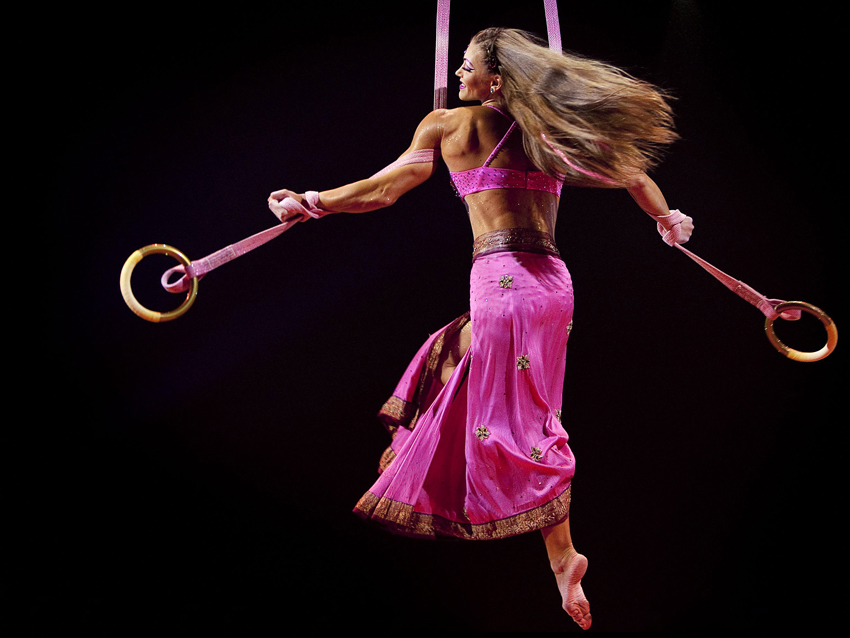
The Cirque Du Soleil gig
We heard that you were relaxing on a beach in Mexico when Cirque Du Soleil first contacted you about the gig?
"After leaving Australia I wanted to get back into the bigger scene again, and so we moved to Los Angeles and, after four months over a Christmas break in Mexico, I was asked to join the Cirque arena show Delirium in like a week’s time!
"Negotiations over the internet resulted in four months with that show and then this brand new show Totem came up. The show’s great and the composers - one’s a drummer and one’s a keyboard player, so that’s why it’s so drum and percussion heavy - gave me free rein to come up with my own basic parts, but then also a lot of freedom with my solos.
"I keep the basic parts the same all the time but you can play different solos within that framework."
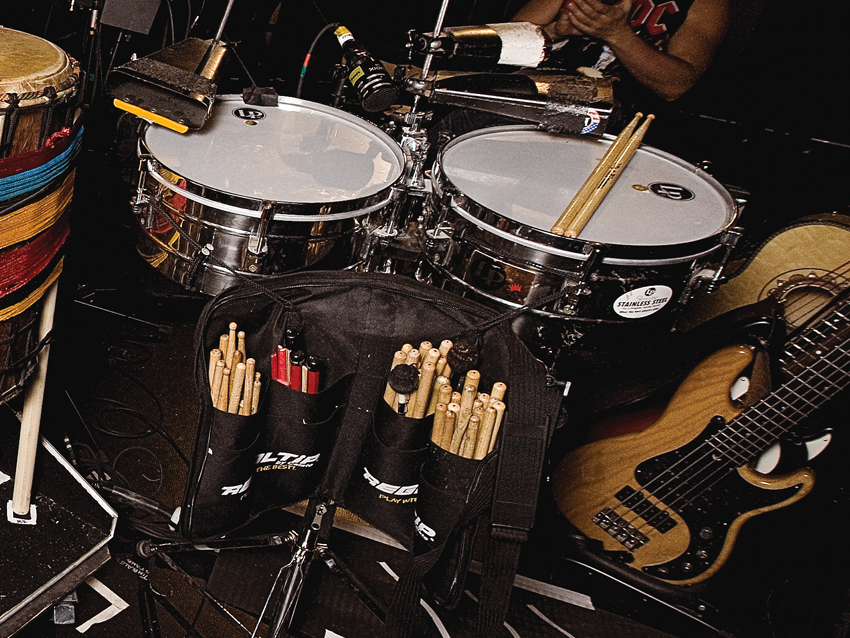
What about the drummer?
How are you getting on with playing alongside [LA prog rock band] Spock’s Beard drummer Nick d’Virgilio?
"Nick and I work very closely together, constantly watching everything that’s going on, and we’re playing off of each other all the time. Nick’s in a box downstairs so we’re listening to each other all the time and he’s up high in my mix so we play a lot of breaks and stabs together.
"I wish he was up onstage with us but the way they set up the show and the sound, they didn’t want live drums bleeding into everything. I guess percussion is softer and they didn’t want to see an ugly plexiglass box up here ’cos that looks terrible.
"We’ve been working together on the show since the very beginning at the headquarters in Montreal, creating the parts there. It’s not charted out like a lot of shows and there’s a lot of visual cues with the performers so you have to watch them all the time and not just sit back.
"All of the musicians go to Montreal for three months to create the show, with everybody else involved starting maybe three months before that. We’d say, ‘Maybe we should play this groove with this, swing more with that,’ and we’d teach each other a break."
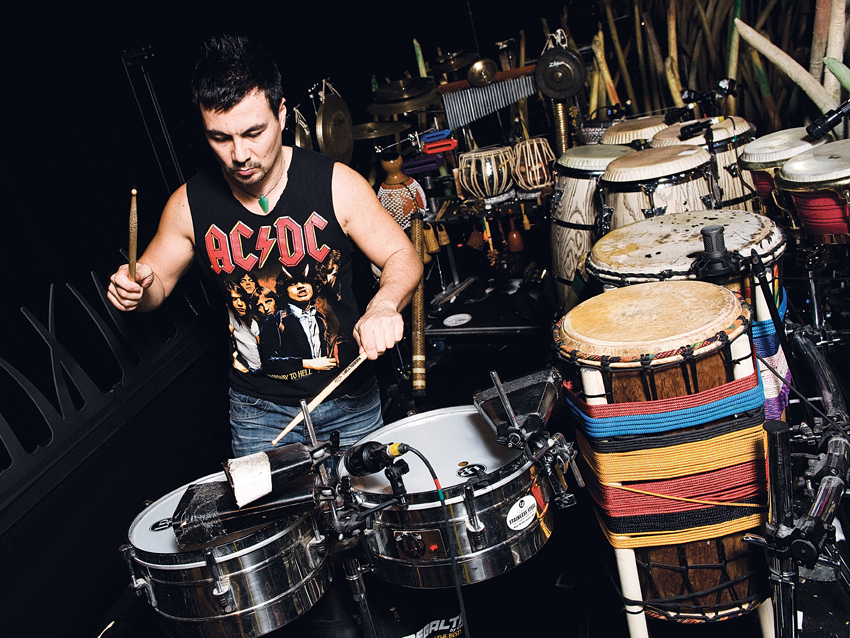
Live back-up plans
Do you have deps for a long-running show of this kind?
"No, it’s not a dep situation as such as they’ve recorded me and we have it on recorded back-up, via Ableton Live, which we’ll have to use soon when the baby’s born. As none of this is charted out, and although it hasn’t happened yet, if Nick was sick then I might have to go down and play kit and put my back-up on.
"Obviously it won’t sound anything like nick but at least all the parts and everything would be there. But then Nick’s one of those guys who’ll never get sick or injured, and even if he was sick he wouldn’t take the day off anyway!"
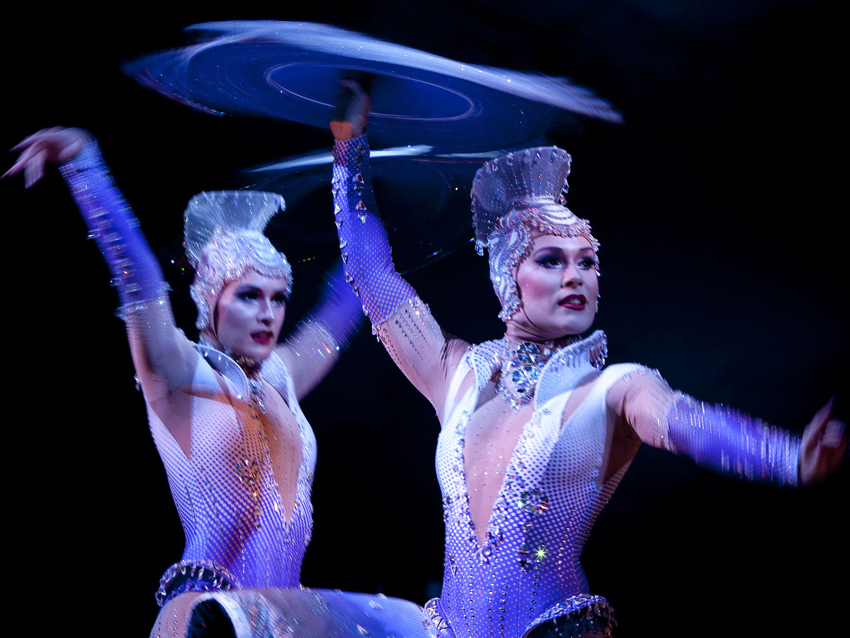
Repetitiveness and injuries
A lot of musicians complain about the repetitiveness when performing in long-running shows. Do you feel that you get to have a decent amount of time between seasons to recharge your batteries?
"This particular show runs all year and it goes to so many different places, like we’ve just been in Amsterdam for three months. We had seven or eight days off for them to bring the show to London and we start the show again here for six weeks, have a week off and then take the show to the States.
"You have to have a little rest and you kind of need that rest because people get injuries all the time doing 10 shows a week. These shows are so strenuous and even I had a wrist injury here and was off the show for a couple of days. You’re playing so much and working out in the travelling gym between shows so you don’t realise how tense your arms are actually getting until it’s too late!
"It was really painful but they have physiotherapists on the tour as well who release the pain out and in a couple of days I was back to work. If you have one gig and a week to get over injuries you’re fine again but when it’s constant two-and-a-half hour shows, often two a day, that’s something else.
"Now in that week off I take a complete break because even when I’m here I practise a lot but I’m also aware that I’m playing a lot in the show and have to pull back a bit."
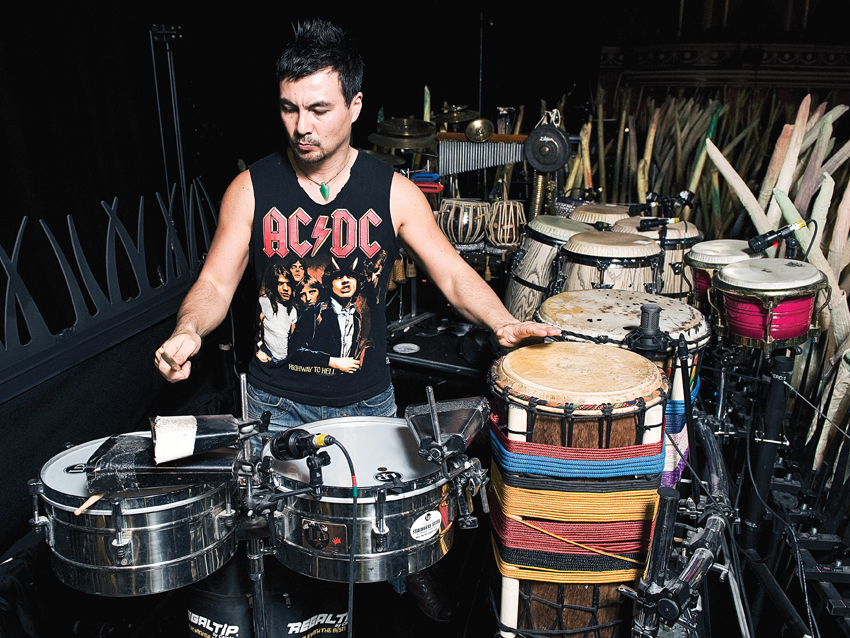
Favourite percussive moments
Do you have any particular favourite percussion features during the show?
"I think the whole thing, really, because there’s percussion and lots of solos all over the place. Just last night I was thinking that you don’t get a rest ever - you go from one song, finish, straight into the next, pick up this instrument and you’re just constantly playing all the time! By the end you’re completely drenched and it certainly keeps you fit, you know?
"There’s a flamenco number when I go down and play cajon, one at the end where I play the dhol and one where I play what they call the ‘Glass Orchestra’ which are water-filled ‘tuned’ science beakers.
"Having all the acrobats around you 30-100ft in the air and seeing the discipline in what they do means that you can really learn from that. They have no fear whatsoever and have lost all concept of fear whilst doing all these amazing things with their bodies."
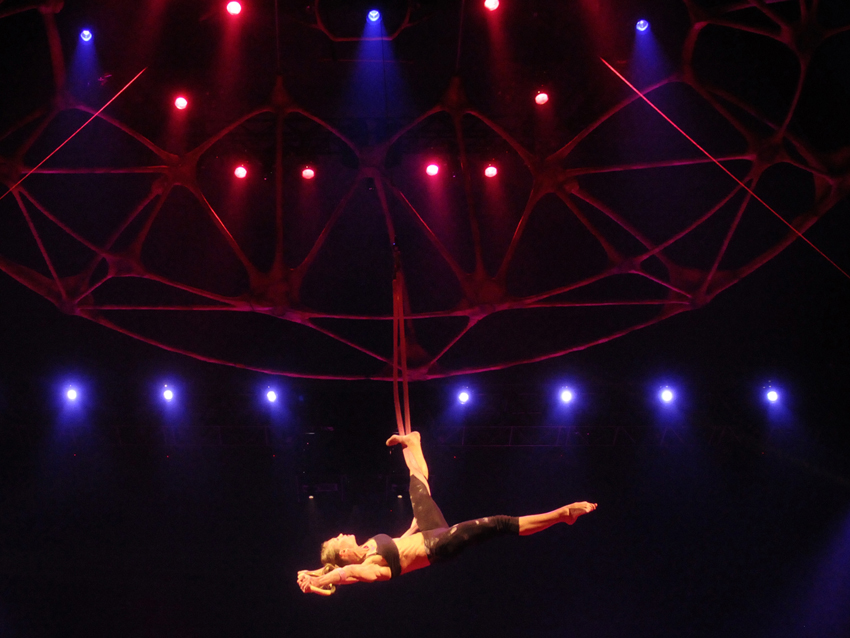
Dangerous moments
Has there been any embarrassing or dangerous moments whilst performing the show?
"Sometimes with all these death-defying acts… like one guy, ‘Perch’ - the 50ft metal pole that screws together, one night it all came undone so you had big metal poles flying through the air and one nearly hit me! Stuff like that doesn’t usually happen though, as the show is pretty safe.
"Sometimes the click track and the computer will completely freeze and you just have to carry on with the show yourself. One time in Amsterdam the generator went down, the lights and amps went out and this guy was still performing on the stage - but thankfully it was quite a drummy thing and he and I managed to finish the act because at least it’s all live drums and nobody in the audience seemed to notice any difference!"
Liked this? Now read: Drum kits of the pros: stars' live and studio drum setups in pictures
Connect with MusicRadar: via Twitter, Facebook and YouTube
Get MusicRadar straight to your inbox: Sign up for the free weekly newsletter